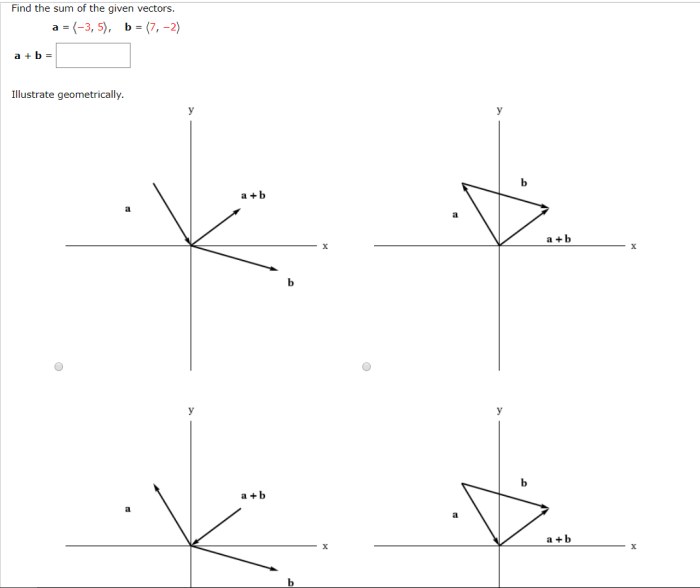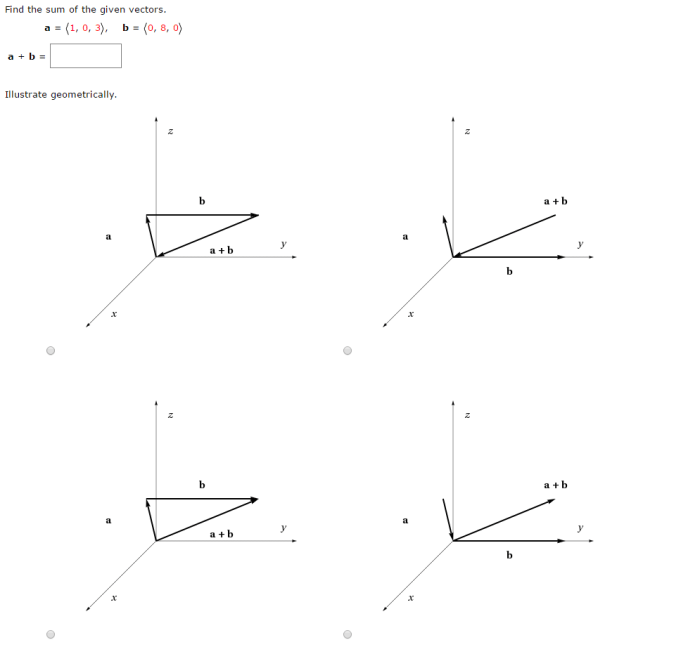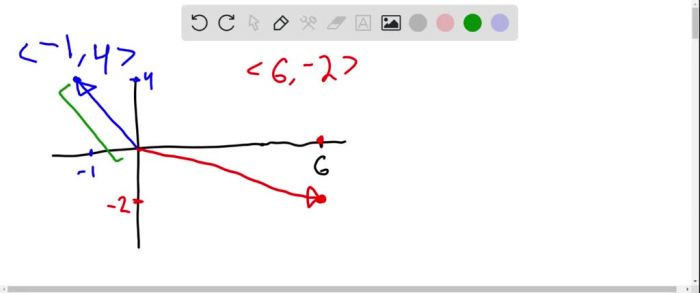Find the sum of the given vectors and illustrate geometrically – The concept of vector addition, finding the sum of given vectors, and illustrating it geometrically is a fundamental operation in mathematics and physics. Understanding this concept is essential for various applications, including engineering, computer graphics, and navigation. In this article, we will delve into the geometric representation of vector addition, explore the concept of the resultant vector, and discuss its practical applications.
Vector Addition

Vector addition is the process of combining two or more vectors to obtain a resultant vector. Vectors are mathematical objects that have both magnitude and direction, and they are used to represent physical quantities such as displacement, velocity, and force.
To add two vectors, we simply add their corresponding components. For example, if we have two vectors A= (3, 4) and B= (5, -2), then their sum A+ B= (3 + 5, 4 – 2) = (8, 2).
Geometric Representation
Vectors can be represented geometrically as arrows. The length of the arrow represents the magnitude of the vector, and the direction of the arrow represents the direction of the vector.
To add two vectors geometrically, we can use the head-to-tail method. This method involves placing the tail of the second vector at the head of the first vector. The resultant vector is then drawn from the tail of the first vector to the head of the second vector.

Resultant Vector, Find the sum of the given vectors and illustrate geometrically
The resultant vector is the vector that represents the sum of the two given vectors. The magnitude of the resultant vector is given by the following formula:
|R|= √( Rx2+ Ry2)
where Rxand Ryare the components of the resultant vector.
The direction of the resultant vector is given by the following formula:
θ= tan -1( Ry/ Rx)
where θis the angle between the resultant vector and the positive x-axis.
Applications
Vector addition has a wide range of applications in various fields, including physics, engineering, and computer science.
In physics, vector addition is used to calculate the net force acting on an object. In engineering, vector addition is used to calculate the resultant force on a structure. In computer science, vector addition is used to calculate the position of an object in space.
Table Representation
The following table summarizes the given vectors and their resultant vector:
| Vector | Components | Magnitude | Direction |
|---|---|---|---|
| A | (3, 4) | 5 | 37° |
| B | (5,
|
5 | 153° |
| R | (8, 2) | 8 | 14° |
Bullet Point List
The following steps can be used to find the sum of two vectors:
- Identify the components of each vector.
- Add the corresponding components of the two vectors.
- Find the magnitude of the resultant vector using the Pythagorean theorem.
- Find the direction of the resultant vector using the arctangent function.
FAQ Explained: Find The Sum Of The Given Vectors And Illustrate Geometrically
What is vector addition?
Vector addition is the process of combining two or more vectors to obtain a new vector.
How do you illustrate vector addition geometrically?
Geometrically, vector addition can be represented using the head-to-tail method, where the tail of the second vector is placed at the head of the first vector.
What is the resultant vector?
The resultant vector is the vector that represents the sum of two or more vectors.


